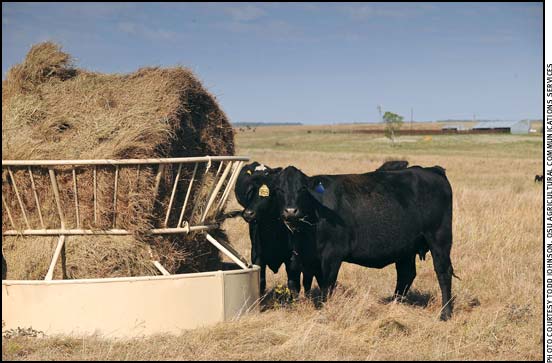Compare Rings
Bale feeder choice can reduce hay waste, save dollars.
The historic 2011 drought aside, cattle producers cannot afford to waste a valuable resource like hay in even the best years.
"Management of input costs is a key business concern and can mean the difference between operational profit or loss, and when it comes to hay waste, using the right type of bale feeder can make a significant cost-savings difference," says David Lalman, Oklahoma State University (OSU) Cooperative Extension beef cattle specialist.
Research conducted by Lalman and other scientists with OSU's Division of Agricultural Sciences and Natural Resources indicates that using a cone-style feeder or modified cone feeder with a sheeted bottom should reduce hay waste to approximately 5%-6% of the original bale weight.
"We found that open-bottom hay feeders can waste as much as 21% of the original bale weight," Lalman says. "Unfortunately, one of the most common types of hay feeders on Oklahoma livestock operations is the open-bottom round bale feeder."
The OSU study examined four bale feeder designs: a conventional open-bottom steel ring, a sheeted-bottom steel ring, a polyethylene pipe ring and a modified cone feeder with a sheeted bottom.
Division scientists discovered that differences in hay feeder design do not restrict dry-matter intake by the cattle, but can significantly affect the amount of feed wasted and subsequently the amount of hay fed.
"Feed cost is the single largest variable influencing profitability of a cow-calf enterprise," Lalman says. "Costs associated with nutrition have been shown to contribute between 40% and 60% of the annual budget of a typical cow-calf operation."
Such wallet-draining waste cannot be easily weathered by state cattle operations suffering under tight profit margins, especially during years such as 2011, where additional feed costs have been a major contributing factor to approximately $668 million in drought-related livestock production losses.












